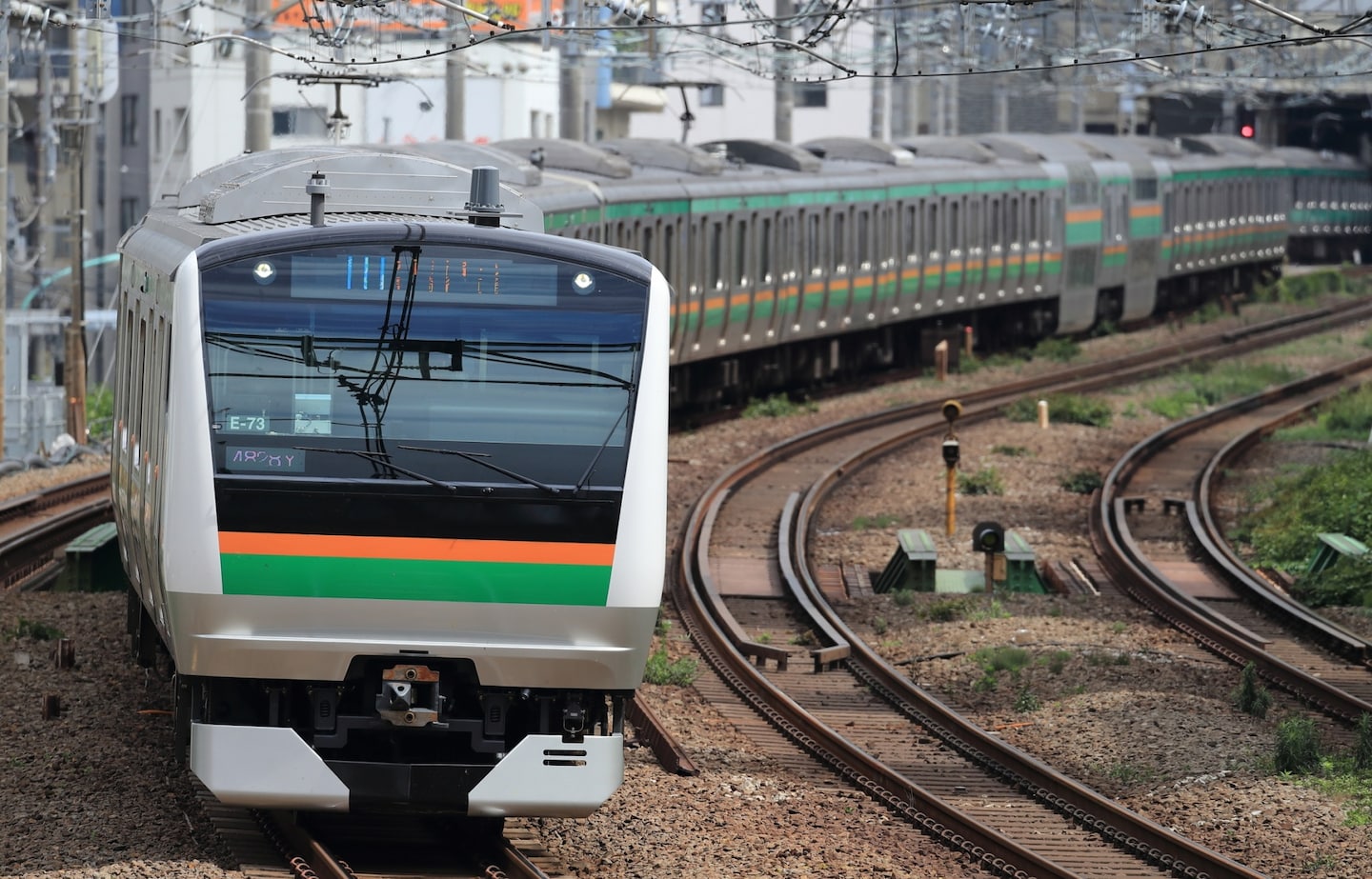Essential Tips for Navigating Trains
Rail transit in Japan is fantastic! The trains are consistently on time, clean and quite safe. But figuring out how to navigate them can be confusing, especially if it’s your first time. Our tips will help make riding the rails a breeze.
By Nicholas RichRailway Lines
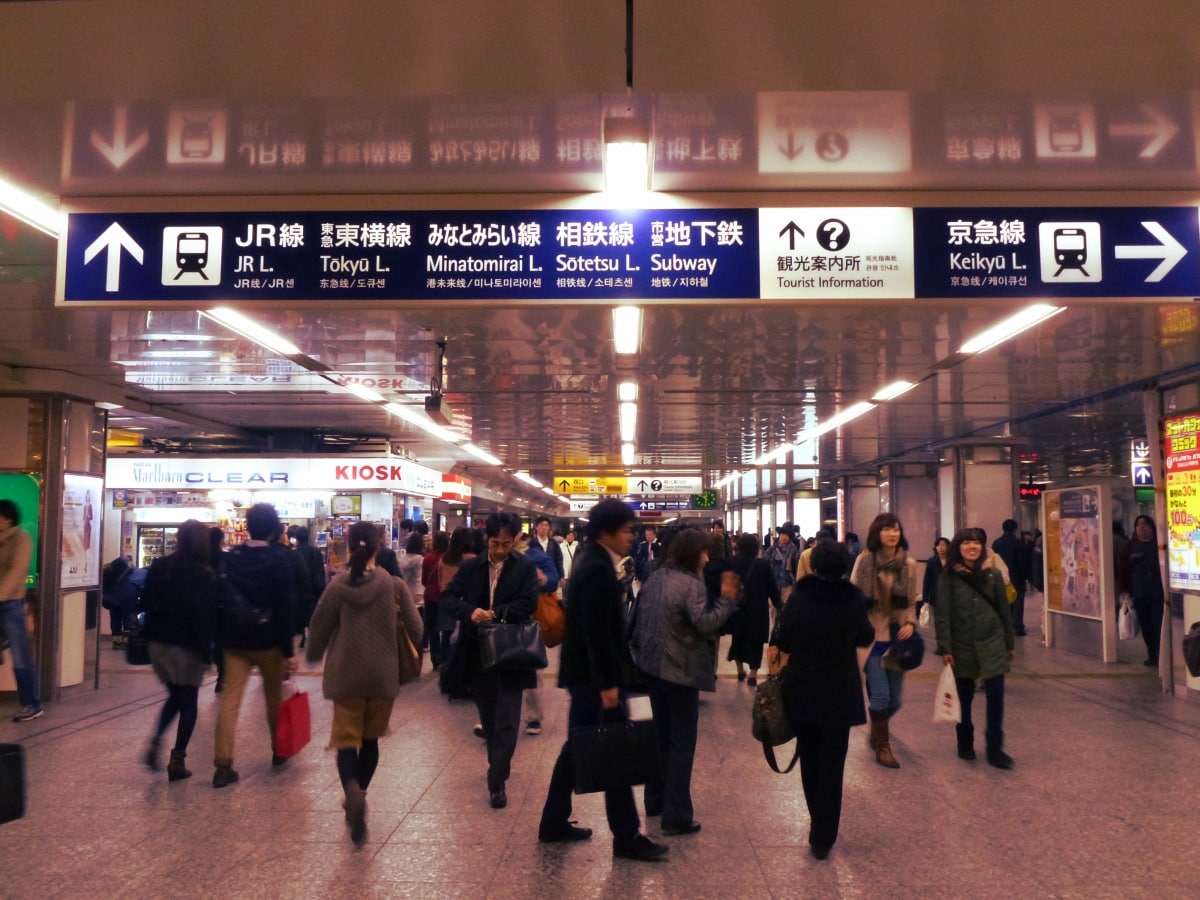
https://hikkii.files.wordpress.com/
Japan has several different railway lines, usually housed together in one of the larger stations in metropolitan areas like Shinjuku Station in Tokyo, or Umeda Station in Osaka. These, along with smaller stations in more rural locations, are the veins at the heart of Japan.
The Japan Railways Group, simply known as JR, is the standard train line throughout most of the country. There are also regional private lines as well as metro subway lines. It’s important to know which line(s) you’ll need to take in order to reach your destination, especially since transfers are incredibly common in urban areas like Tokyo.
Tickets
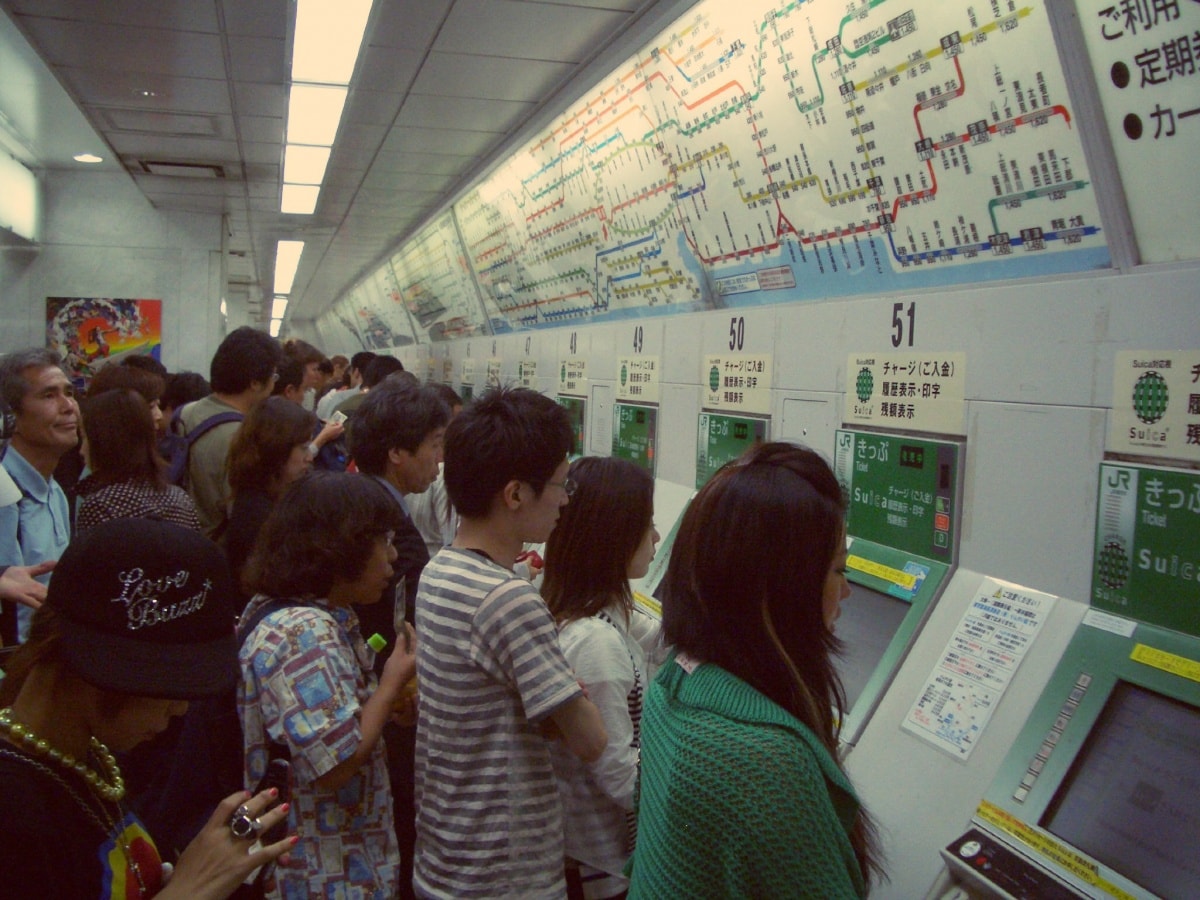
https://upload.wikimedia.org/wikipedia/commons
Regardless of what type of train you have to take, the first step is buying a ticket. Stations come equipped with automated ticketing machines, often with an English language setting available. Above the ticketing kiosks are handy railway maps that let you know which station is on what line, and how much it will cost to get there from your current location. Just insert your yen and out pops your ticket!
Tickets are inserted into a small slot on the side of the entrance turnstile. After inserting your ticket, make sure you pick it up on the other side! This is a simple but confusing element for first time visitors, and making sure you take your ticket will save you the headache of having to explain you lost it—and the financial hassle of having to buy a new one. When you exit at your final destination, the ticket will remain inside the turnstile, so don’t worry! The machine didn’t eat it.
IC Cards
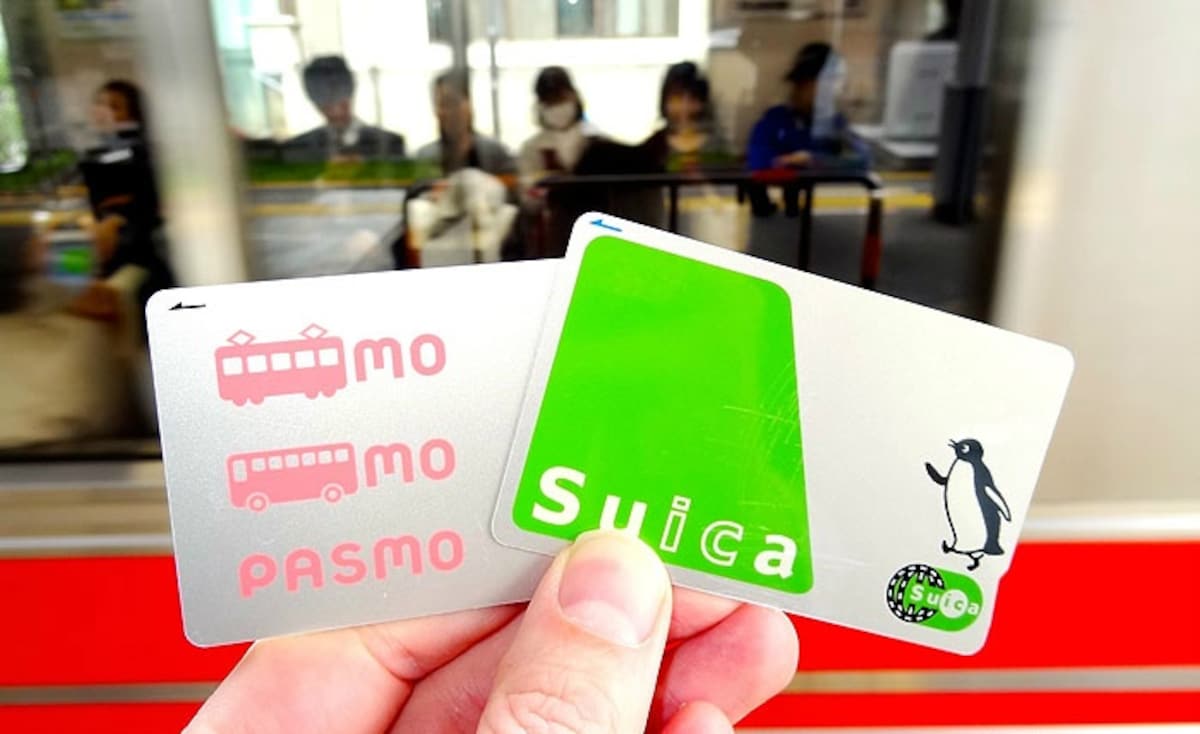
http://cdn.netmobius.com/
IC (integrated circuit) cards, like Suica or Pasmo, are convenient, regional fare cards the size of a credit card that eliminate the hassle of having to buy an individual ticket when traveling, and can be used on all regular commuter trains (JR, private, or subway), as well as most buses. They can be purchased at any automated ticketing machine that also sells commuter passes, and the machines will have the card logo on it. The process is similar to purchasing a ticket, but when prompted for your selection, simply choose the option to purchase an IC card instead. They can also be purchased at manned ticketing offices.
An IC card will cost ¥2,000. This includes ¥1,500 balance for travel, and a ¥500 deposit that can be refunded in the unlikely event that you don’t want to keep it as a souvenir. You can even put your name on it! It can be recharged at any ticketing machine where IC cards can be purchased. As an added bonus, they can be used in some taxis and inner-city buses to complete your journey.
IC Card map
https://en.wikipedia.org/wiki/Suica
It’s worth noting that different regions have different cards, although they function similarly. In 2013, 10 of the more popular cards joined in an IC alliance—which includes Suica (East Japan), Pasmo (Tokyo), Icoca (West Japan), Kitaca (Hokkaido), Pitapa (Kansai), Toica (Central Japan), Manaca (Nagoya), Sugoca (Kyushu), Nimoca (Fukuoka) and Hayakaken (Fukuoka City)—and they now work interchangably across the nation. For specific details of the full coverage area of each card, please follow the individual links.
Fare Adjustment
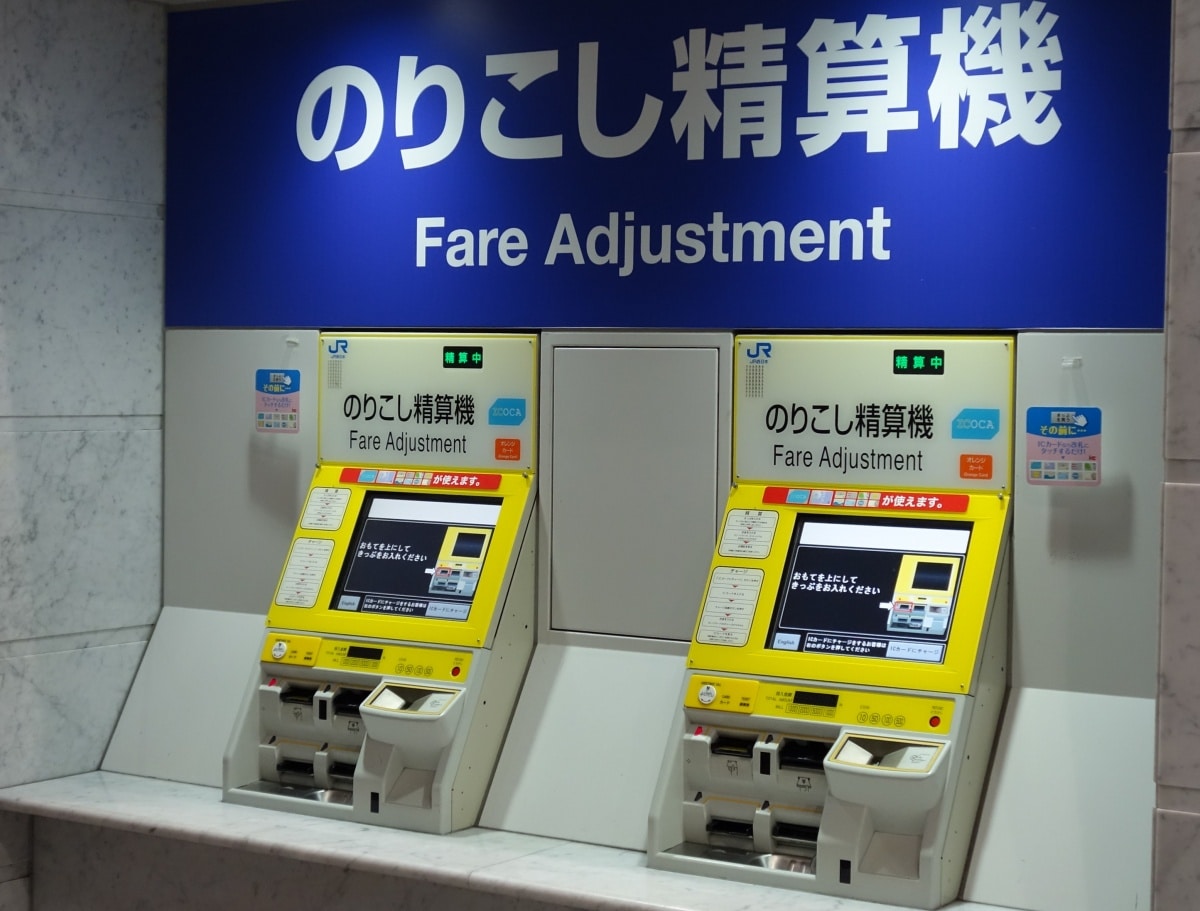
https://commons.wikimedia.org/wiki/File:Fare_adjustment_machine_jr_w_01.jpg
Fare adjustment is what it’s called when you’re required to pay additional money for your trip, either by buying a ticket for less than the cost of the entire length of your trip, or by not having a large enough balance on your IC card. While it can be surprising to discover you slipped up, as the turnstile card reader turns red and emits a rather conspicuous noise, it’s incredibly easy to remedy thanks to the fare adjustment machines near the turnstiles before exiting. Insert your ticket or IC card, as well as the amount displayed on the screen, to cover the remaining cost of the trip.
Commuter Pass
JR Commuter and Tokyo Metro passes can be purchased for students or workers that regularly take the same route to and from one station to another—allowing unlimited rides along that route. They can be purchased for one, three or six-month periods, and the cost is dependent on the route as well as the time frame. There's also the option to purchase a more expensive pass that allows unlimited access to all Tokyo Metro lines for as long as the pass is valid.
JR Commuter passes can be purchased at the Green Window of JR offices, and can be charged using ticketing machines after that. Tokyo Metro passes can be purchased at corresponding stations along eligible routes. A list of Tokyo Metro pass offices can be found at the link below.
Mapping Your Route
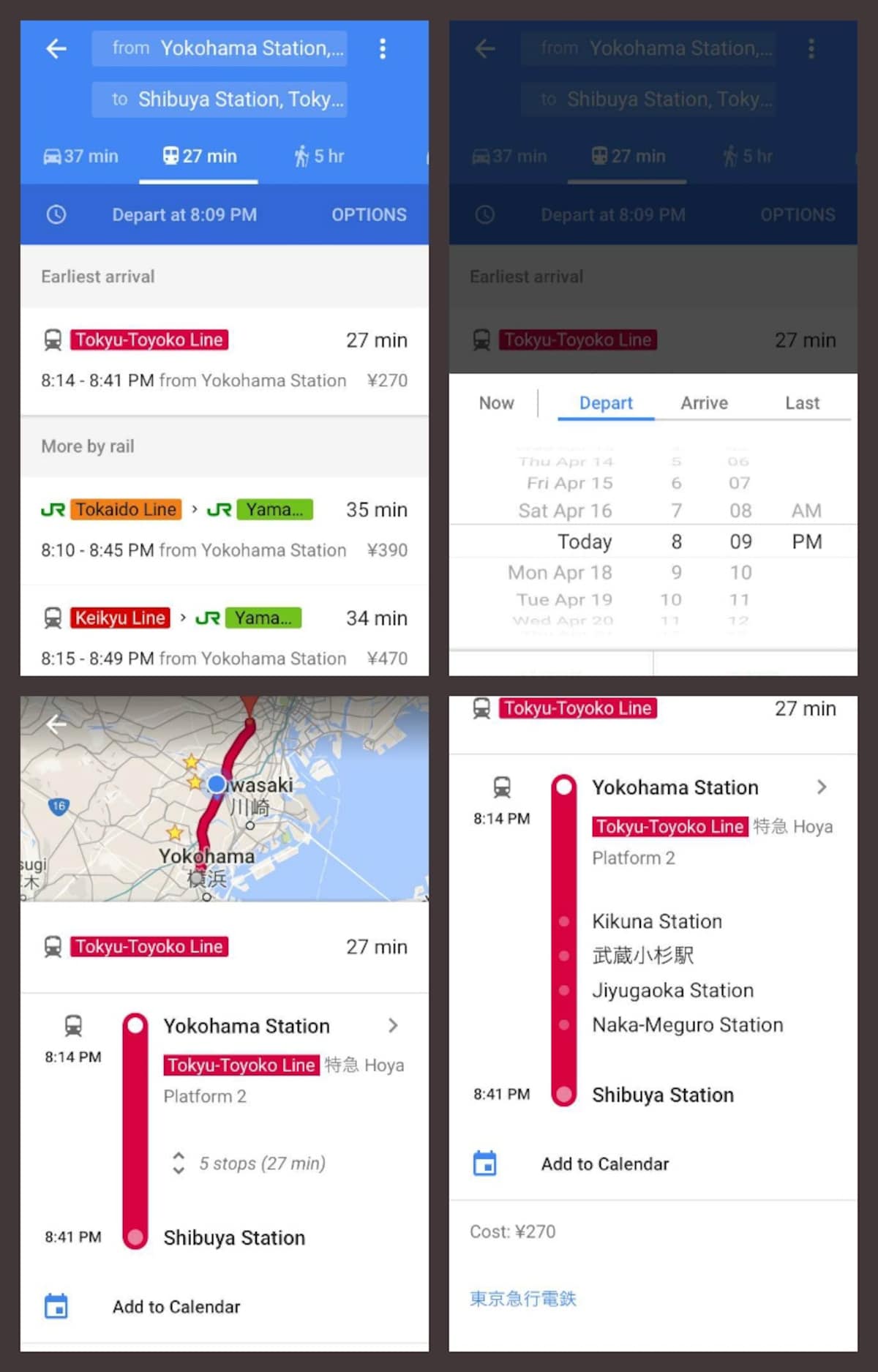
https://www.google.co.jp/maps?source=tldsi&hl=en
Frankly, Google Maps is the perfect tool for mapping your route, regardless of other options out there. The browser version works, but the smartphone app is incredibly convenient. Enter your destination and Google Maps will provide you with a robust list of possible routes, with information like departure times, number of stops along the way, any transfers that might be required and the cost of each route. It’s worth noting that the cost of transferring from JR to private rail, or from train to bus usually increases the cost of a trip considerably, so it might be worth it to take a longer route and save yourself some yen.
Just one word of warning: if you're operating in English, it's best to input your final objective by name rather than by address. There are multiple ways to write Japanese addresses in English, and Google Maps has trouble interpreting them properly, with the result that it tends to be off by several blocks if you've got a somewhat obscure destination. If you can input the address in Japanese, you will get 100 percent certainty, of course—and even if you can't read it, copy and paste is a useful tool (the seven-digit postal code can be ignored). But if you can't get the Japanese address, you're best off inputting the name of your destination or the name of the nearest station, as these should come up without any trouble.


